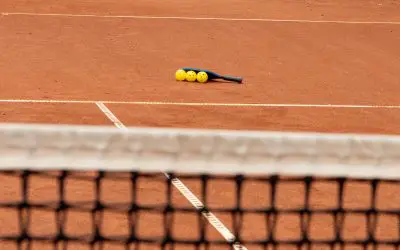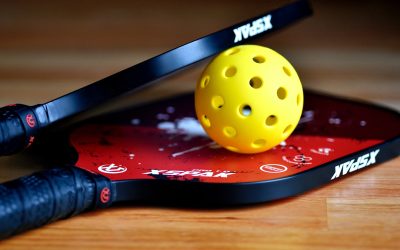Pickleball’s been making waves in the sports world, and if you’re not in on it yet, it’s high time you got the scoop. It’s a game that’s easy to pick up, but knowing the rules is key to really getting into the swing of things.
We’re going to break down the top five rules of pickleball that you need to know. Whether you’re a seasoned pro or a complete newbie, these rules are the foundation of the game. Let’s dive in and get you ready to step onto the court with confidence.
Rule 1: Scoring
In the world of pickleball, understanding the scoring system is inevitably a game-changer. It’s fair to say, your winning odds increase when you have a clear grasp of the scoring dynamics. So let’s dive into it!
Pickleball follows a unique scoring protocol. Notably, you can only score points when serving. In other words, if you’re receiving and win the rally, you don’t get a point, but you do earn the service for the next rally.
For a doubles game, the score is always called out in a sequence of three numbers: the serving team’s score, the receiving team’s score, and finally, the server number (either 1 or 2). This order is critical because it helps players keep track of the score and who should serve next.
Ironically, the serving team often has the ‘advantage’, but simultaneous activity can make keeping track of the score somewhat tricky. Here are three key takeaways that can make it less daunting:
- Only the serving team can score points.
- Points generally go upto 11 but you must win by 2 points.
- In doubles, the score dictates who serves next.
In comparison, in a singles game, the score is trailed by just two numbers: the server’s score first, followed by the receiver’s score. Because there’s only one player on each side in a singles game, the need for a third number (server 1 or 2) is effectively eliminated.
Rule 2: Serving
Now let’s dive into the process of serving, a crucial aspect of pickleball. To begin, the server stands behind the endline, serving the pickleball diagonally to their opponent’s side of the court. Faults occur if the ball touches the non-volley-zone or the ‘kitchen’ on the serve. These rules ensure a fair and challenging game where the players must exercise precision and control.
One crucial fact to remember is that serving must always start from the right-hand side of the court. The player’s score decides their serving position. If the score is even, you serve from the right side. Alternatively, if the score is odd, you serve from the left.
What’s more, let’s look into the scoring and serving dynamics for singles and doubles games separately.
Singles Games Serving
In Singles games, servers switch sides after each point won, allowing for an equal advantage over the court.
| Serve from the Right | Serve from the Left |
|---|---|
| Even scores | Odd scores |
Doubles Games Serving
In Doubles, things get a little trickier. The team gets to serve from both ends of the court before the serve switches to the opposing team. Naturally, this earns teams an opportunity to score up to two points per possession.
| First Server | Second Server |
|---|---|
| Right Side: Even scores | Left Side: Score after the first point |
Do note, in doubles, the first serve of a new game is always one-sided – that is, it switches to the opposite team after just one serve. Only after the first point does the entire sequence kick in.
Understanding and mastering the serving dynamics in pickleball offers a strategic leverage for the player and make the game all the more engaging and exciting. Stay tuned as we delve deeper into the rest of the rules in the section to follow.
Rule 3: Double Bounce Rule
As we delve deeper into the rules of pickleball, we come across the essential and strategic Double Bounce Rule. This rule’s a significant game changer and understanding it could give you a competitive edge.
In pickleball, the double bounce rule states that each team must play their first shot off the bounce. That means, after the serve, the receiving team must let the ball bounce once before returning, and the serving team must also let the ball bounce once before volleying. That’s why it’s also referred to as the two-bounce rule. This rule applies regardless of whether you’re playing singles or doubles.
The double bounce rule prevents players from smashing the ball immediately after it’s served or returned, forcing players to strategically plan their shots. It tones down the intensity of the game a notch, making it more of a strategic game rather than simply a test of speed or strength.
Let’s take a quick look at this double bounce rule in detail:
- The receiving team must let the serve bounce once before taking a shot.
- Serving team has to wait for the return to bounce before they’re allowed to play their shot.
- The double bounce rule applies to both singles and doubles games.
Having this rule in perspective during the game allows for a leveled playing field, promoting strategy and skill over raw power. A key aspect of this rule is the ability to anticipate the opponent’s moves and respond appropriately, enhancing the need for agility, accuracy, and precision. When fully understood and properly executed, this rule can dramatically elevate the quality of your game.
Rule 4: Faults and Out of Bounds
Now that we’ve covered the double bounce rule, it’s time to delve into another important regulation that affects how the game is played: Faults and Out of Bounds.
In pickleball, a ‘fault’ occurs when a player breaks one of the game rules. This might involve hitting the ball out of bounds, stepping into the non-volley zone (also known as the kitchen) to volley the ball, or even failing to execute the double bounce rule we talked about earlier. When a fault is committed, the opposing team scores a point.
Defining the out of bounds in pickleball is also straightforward. The court’s outermost lines indicate the boundaries, and any ball hit beyond these lines is considered out of bounds. Also, a ball landing on a boundary line is regarded as ‘in’ or valid.
Without a thorough understanding of what constitutes a fault and which areas are out of bounds, you’ll find it hard to successfully navigate a game of pickleball. A good grasp of these rules can lead to more strategic game play, allowing you to fully exploit the opportunities that the rules provide.
In the context of a doubles game, recognizing the out of bounds and avoiding faults becomes even more essential as you sync up with your partner. Coordination and communication are key: one teammate might view an incoming ball differently than the other, leading to a fault if they’re not careful!
Let’s visualize the different types of faults in a simple table:
| Type of Fault | Description |
|---|---|
| Out of Bounds | Hitting the ball beyond the court’s boundaries or on an opponent’s side. |
| Kitchen Violation | Stepping into the non-volley zone to volley the ball. |
| Serve Fault | Failing double bounce rule or hitting the net on serve. |
Remember, each fault provides the opposing team an opportunity to score. So, practice adequately, understand these rules inside out and keep the faults to a minimum to increase your chances of victory in this thrilling game of pickleball.
Rule 5: The Non-Volley Zone
Arguably one of the most unique and intriguing aspects of pickleball is the Non-Volley Zone, sometimes colloquially referred to as ‘the kitchen’.
What’s the role of this zone in the game, you may ask? It’s a designated area extending 7 feet on both sides of the net where players aren’t allowed to volley (hitting a ball before it bounces). Essentially, this rule aims to limit aggressive smash shots often seen in sports like tennis and badminton. More so, it adds a strategic layer to pickleball, necessitating precise shot placement and improving the game’s defensive aspects.
Let’s dive deeper into how to play within the boundaries of the Non-Volley Zone.
Remember these golden rules:
- You must not strike the ball before it bounces when standing within this zone.
- Stepping on or over the non-volley line while executing a volley is a fault.
It’s crucial to establish that while it’s a fault to volley within this zone, once the ball has bounced, players may enter ‘the kitchen’, either to return the ball or poach (intercepting a ball that would ordinarily have been played by the partner).
Interestingly, in doubles games, communication is key in the Non-Volley Zone. Players often strategize their moves by alternating their positioning; while one stays back for potential deep shots, the other poaches at the net.
Here’s a simple table illustrating key components of the Non-Volley Zone:
| NVZ Rule Component | Description |
|---|---|
| Ball Bounce | Players can enter and play in the NVZ after the ball has bounced |
| Zone Violation | Volleys are not allowed within the NVZ |
| Line Fault | Stepping on or over the line of NVZ while volleying is a fault |
Sharpening your skills in this rule won’t just elevate your game, it’ll also significantly reduce your faults. Now, let’s paddle forward to the next articles where we’ll explore some more fascinating aspects of pickleball.
Conclusion
Mastering the Non-Volley Zone rule is a game-changer in pickleball. It’s not just about avoiding aggressive shots, but it’s also about strategic play and precise shot placement. Doubles games require an additional layer of skill – communication and positioning. By understanding the ins and outs of this rule, you’re setting yourself up for success on the court. Practice is key to reducing faults and enhancing your gameplay. Remember, every rule in pickleball, including the Non-Volley Zone, is designed to make the game more exciting and challenging. So, get out there, apply what you’ve learned, and enjoy every moment of your pickleball journey.













0 Comments